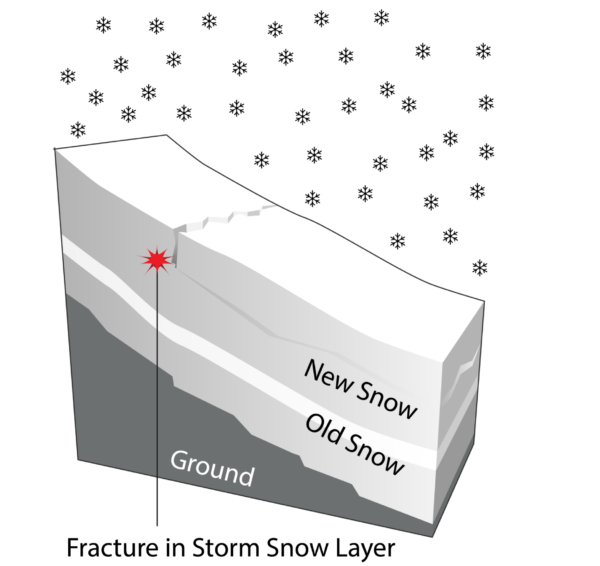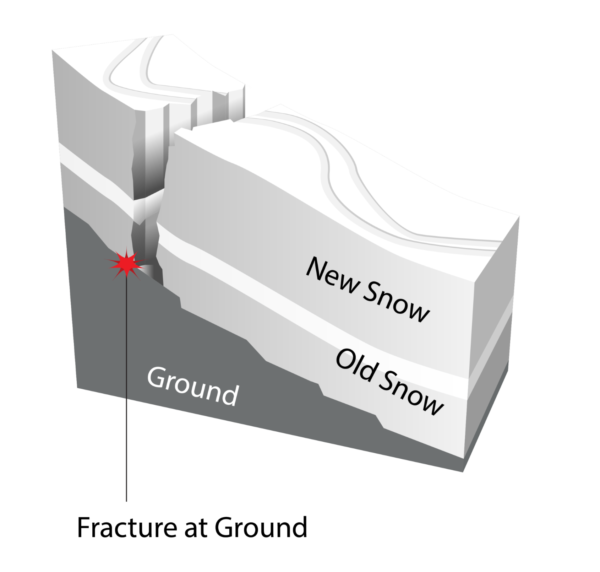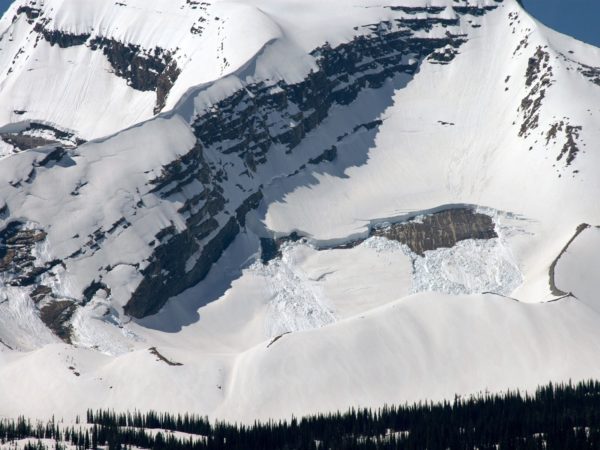The plane, or relative location within the snowpack, where an avalanche fractures.
Paying attention to failure interfaces can help inform what kind of avalanche characters exist and which weak layers are active. The failure interface is sometimes referred to as the “bed surface.”
- Storm snow (S): The avalanche releases on a layer within the new or recent storm snow. These weak layers often form from density differences within the storm snow due to changes in wind speed, temperature, or snowfall rate during a storm, and they typically stabilize quickly (within a day or two).
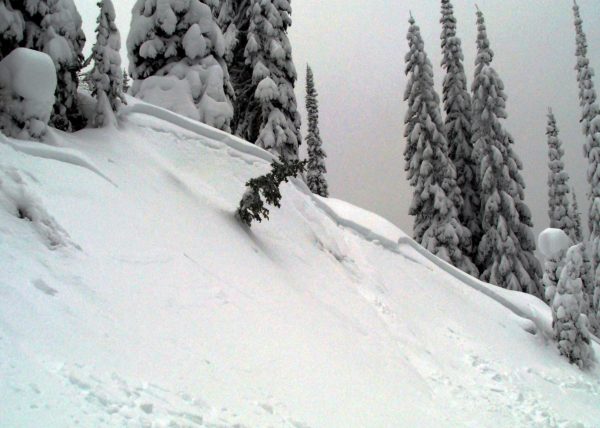
A slab avalanche that failed on a layer within the new storm snow. Credit: Flathead Avalanche Center.

A loose snow avalanche that failed within the recent storm snow. Credit: University of British Columbia
- New/old interface (I): The avalanche releases at the interface of new or recent storm snow and an older layer, sometimes called the storm interface. These weak layers, such as crusts, facets, or surface hoar, often form on or near the snow surface during the days or weeks that precede a storm.
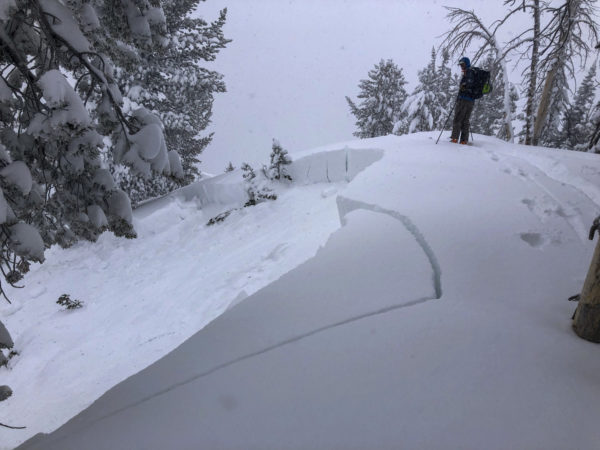
A slab avalanche that failed at the new/old interface below the new storm snow. Credit: Sawtooth Avalanche Center

A slab that failed on the new/old interface, which was a layer of facets buried by new snow. Credit: Crested Butte Avalanche Center.
- Old snow (O): The avalanche releases within the old snow below the most recent storm and storm interface. These weak layers, such as crusts, facets, surface hoar, or depth hoar, are commonly persistent weaknesses that have been buried by several generations of storms.
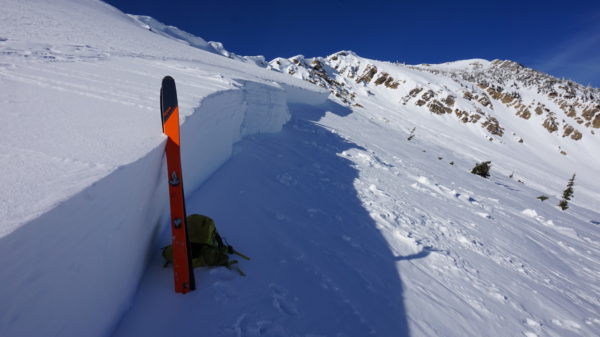
A slab that failed on an old weak layer, buried by numerous generations of storms. Credit: Flathead Avalanche Center
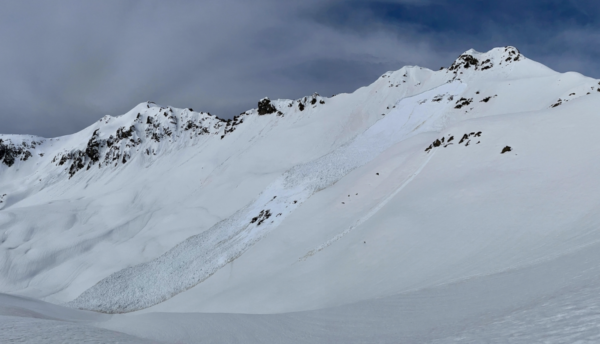
A wet slab that failed on an old weak layer buried earlier in the season. Credit: Crested Butte Avalanche Center
- Ground (G): The avalanche releases at the ground, on glacial ice, or firn. This interface can present as facets or depth hoar at the base of the snowpack. Full-depth glide avalanches also fail at the ground.
